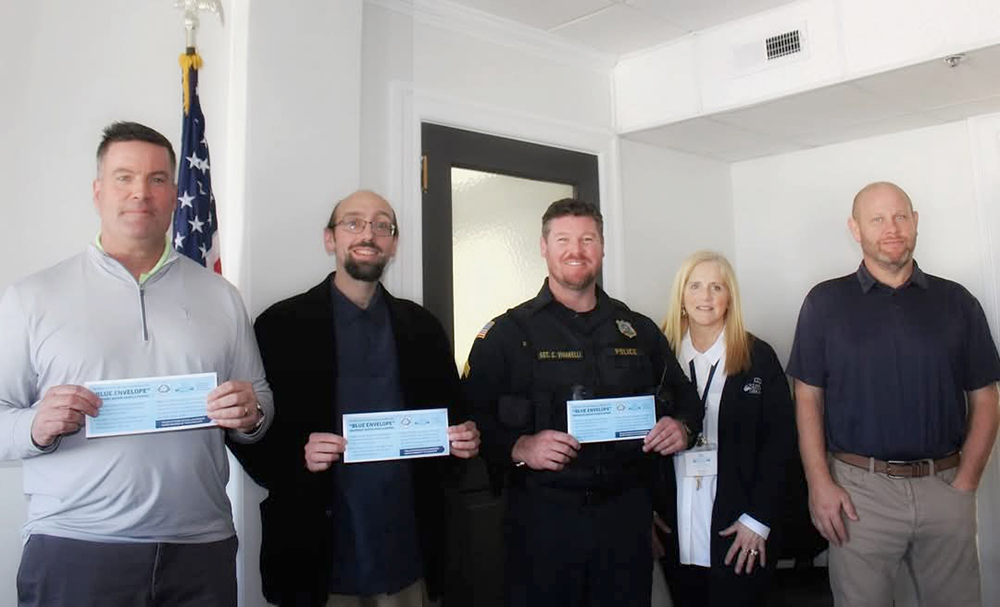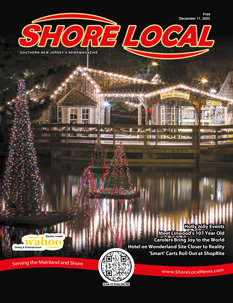The Ocean City Police Department has launched a new initiative to reduce stress and improve communication during traffic stops involving individuals on the autism spectrum.
The Blue Envelope Program, introduced in partnership with the Ocean City Free Public Library, was proposed by Steffen Klenk, a 2011 Ocean City High School graduate. Klenk, who is an autism advocate and serves as events coordinator and reporter for Shore Local Newsmagazine, brought the idea to the department after learning about similar efforts in other communities.
The program provides a blue envelope designed to hold a driver’s license, registration and insurance documents. One side contains simplified instructions for the motorist, while the reverse offers guidance for officers on how to engage calmly and effectively during a stop. The envelopes are available at the front desk of police headquarters at 835 Central Ave.
“This is a mechanism to keep people safe,” said Police Chief Bill Campbell. “If we can bridge the gap and create a better experience for someone with autism, it’s a win for everyone.”
At a press conference announcing the program, Klenk spoke about the anxiety he experienced during a traffic stop of his own. “I didn’t know what to expect. I always had those nerves and anxiety,” he said. “Thankfully, I had people around me who were supportive.”
Klenk and his mother, Pamela, brought the idea to Sgt. Chris Vivarelli, who helped develop the local version of the program.
Library Director Karen Mahar said the library was “all in” when asked to collaborate. She said the initiative helps raise awareness about how stressful a routine interaction can be for someone on the autism spectrum.
The program also launched at a meaningful time—April is Autism Awareness Month.
How it works
The front of the envelope includes three key reminders for drivers:
- Keep your hands on the steering wheel unless directed otherwise, even if the officer has not yet approached.
- Be aware the officer may use a flashlight, flashing lights or a radio.
- When the officer arrives, let them know you have a Blue Envelope, answer questions, and ask permission before moving.
The reverse side includes information for officers:
- Drivers may be sensitive to lights or noise and may require extra time to respond.
- Officers are encouraged to speak clearly, use simple language and avoid unnecessary detail.
- Some drivers may avoid eye contact, display repetitive movements or react differently to authority.
- The envelope may include a contact card and indicate how the driver communicates—whether verbally, through sign language, pictures, an electronic device or writing.
- Officers are reminded to clearly state when the stop is complete.
Chief Campbell was joined by Deputy Chief Clint Helphenstine, Sgt. Vivarelli and Mahar at the announcement. Vivarelli thanked the Klenks for bringing the idea forward and credited department leadership and the library for their support.
Klenk said the program not only empowers autistic drivers but also gives families peace of mind. “Everyone learns and communicates differently, but we all have something to contribute,” he said.
The department plans to promote the program through social media and city channels. For now, Blue Envelopes are available at police headquarters at 835 Central Ave. in Ocean City.

















